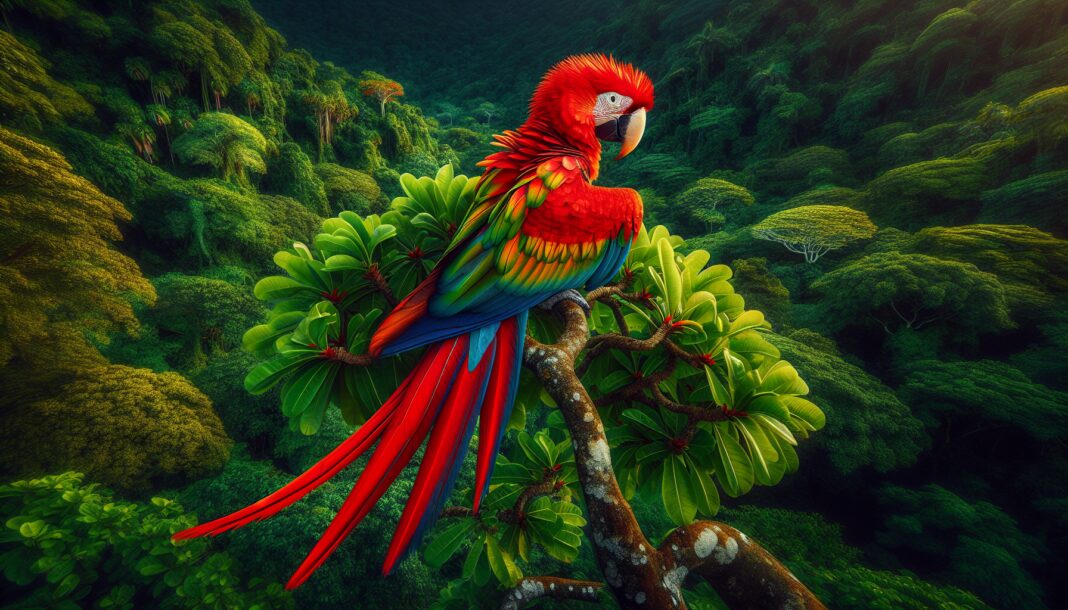Exotic animals of the Caribbean captivate with their vibrant diversity, ranging from the curious green iguana to the rare and elusive solenodon. This remarkable region, home to a dazzling array of species, offers unparalleled opportunities to explore unique wildlife.
Join us as we uncover fascinating details about these extraordinary creatures and their stunning habitats, sparking a deeper appreciation for the Caribbean’s natural wonders.
Unique Diverse Wildlife of the Caribbean
The Caribbean is a treasure trove of biodiversity, teeming with life in every corner. Its unique wildlife offers a fascinating glimpse into the natural world, with species that captivate scientists and tourists alike. This section explores the diverse habitats, endemic species, and ongoing conservation efforts that make the Caribbean a hotspot for nature lovers.
Fascinating Habitats and Ecosystems
The Caribbean’s habitats range from lush rainforests to vast mangrove swamps. Each ecosystem supports a variety of life forms, each more enchanting than the last. Rainforests boast towering trees and a canopy bustling with birds and insects. Coastal mangroves provide a nursery for countless marine species, protecting shorelines and preventing erosion. Meanwhile, the region’s dry forests and savannas host an array of reptiles and mammals, adapted to the harsh conditions.
Coral reefs, often called the “rainforests of the sea,” are a cornerstone of marine biodiversity. These vibrant underwater landscapes shelter a plethora of fish, crustaceans, and corals. Seagrass beds and tidal flats also play crucial roles, supporting marine life and maintaining ecological balance. The Caribbean’s diverse ecosystems are interconnected, forming a complex web of life that is both resilient and fragile.
Endemic Species Found Nowhere Else
The Caribbean is home to an astonishing number of endemic species, meaning they are found nowhere else on Earth. The Cuban solenodon, a rare insectivore with a venomous bite, is one such marvel. Another is the Jamaican iguana, once thought extinct, now a symbol of successful conservation efforts. The region’s isolated islands have given rise to unique bird species like the colorful Puerto Rican parrot and the Barbuda warbler.
Marine endemism is equally impressive, with species like the Caribbean reef octopus and various corals and fish. This high level of endemism is a result of geographic isolation, allowing species to evolve separately over millennia. Protecting these rare jewels is vital, as their loss would mean their complete disappearance from our planet.
Conservation Efforts for Caribbean Wildlife
Conservation efforts in the Caribbean aim to safeguard its unique biodiversity against threats like habitat destruction and climate change. Organizations and governments work together to establish protected areas and implement sustainable practices. Community-based initiatives play a vital role, engaging locals in preserving their natural heritage.
Programs focus on restoring degraded habitats, such as reforestation projects and coral reef restoration. Endangered species benefit from captive breeding and reintroduction programs, boosting their populations in the wild. Education and advocacy are also key components, raising awareness about the importance of biodiversity and the actions needed to protect it. With ongoing efforts, Caribbean wildlife has a fighting chance to thrive for generations to come.
Popular Exotic Animals of the Caribbean
The Caribbean’s exotic animals are both iconic and captivating, drawing visitors from around the globe. From the vibrant birds to the mysterious creatures of the deep, the region is a paradise for wildlife enthusiasts. This section delves into the colorful birds, marine life, and land animals that make the Caribbean truly enchanting.
Colorful Birds: Parrots and Hummingbirds
The Caribbean is a haven for bird lovers, with its skies and trees adorned by vivid parrots and delicate hummingbirds. Parrots, like the Cuban amazon and Saint Lucia parrot, add a splash of color to the landscape. Known for their intelligence and social nature, these birds are a delight to observe in the wild.
Hummingbirds, with their iridescent plumage and rapid wing beats, are a marvel of nature. The bee hummingbird, the world’s smallest bird, is found only in Cuba. These tiny creatures, with their incredible agility, play a crucial role in pollination, sustaining the region’s plant life.
Mysterious Marine Life: Coral Reefs and Sea Turtles
The Caribbean’s coral reefs are bustling hubs of marine life. Hosting an array of colorful fish, sea turtles, and corals, these underwater gardens are a diver’s dream. Sea turtles, like the hawksbill and green turtle, grace these waters, playing vital roles in maintaining healthy marine ecosystems. Their nesting sites on Caribbean beaches are crucial for their survival, drawing conservationists to protect these gentle giants.
The reefs themselves are alive, composed of countless tiny coral polyps. They provide shelter and food for a myriad of marine species, forming a vibrant and essential ecosystem. The health of these reefs is critical, as they not only support biodiversity but also protect coastlines from erosion and storm damage.
Iconic Land Mammals and Reptiles
The Caribbean’s land mammals and reptiles are as diverse as they are fascinating. The charming and elusive hutia, a rodent found on several islands, is a unique mammal of the region. Bats, the only native terrestrial mammals, play crucial roles in pollination and seed dispersion.
Reptiles, like the rock iguana and boa, add to the Caribbean’s exotic allure. The rock iguana, with its impressive size and striking appearance, is a notable resident of the region. Conservation efforts are crucial for these species, as habitat loss and introduced predators pose significant threats.
How to Experience Caribbean Wildlife Safely
Experiencing the Caribbean’s wildlife is a thrilling adventure for nature enthusiasts. However, it’s essential to engage in activities that are safe for both visitors and the animals. This section provides insights into the best tours, ethical viewing practices, and tips for photographers seeking to capture the beauty of Caribbean wildlife responsibly.
Best Wildlife Tours and Nature Reserves
Exploring the Caribbean’s wildlife is best done through guided tours and visits to nature reserves. These experiences offer a safe and informative way to encounter the region’s unique flora and fauna. Knowledgeable guides provide insights into the ecosystems, ensuring a memorable and educational experience.
Nature reserves such as the Blue and John Crow Mountains in Jamaica and the El Yunque National Forest in Puerto Rico offer protected habitats for wildlife. Tours often include birdwatching, hiking, and snorkeling, allowing visitors to immerse themselves in the natural beauty of the Caribbean. Choosing eco-friendly tours and respecting park regulations enhances the experience while supporting conservation efforts.
Responsible and Ethical Wildlife Viewing
Respect for wildlife is paramount when exploring the Caribbean. Ethical viewing practices ensure the well-being of animals and the preservation of their habitats. Maintaining a safe distance from animals, avoiding feeding or touching them, and following guidelines provided by tour operators helps minimize human impact.
Supporting conservation-focused tours and activities contributes to the protection of endangered species. Engaging with local communities and learning about their conservation efforts fosters a deeper understanding and appreciation of the region’s natural heritage. These practices ensure that future generations can enjoy the Caribbean’s wildlife as we do today.
Tips for Photographers Capturing Exotic Caribbean Animals
Photographers visiting the Caribbean are often eager to capture its exotic wildlife. Patience and preparation are key to photographing animals in their natural habitats. Understanding animal behavior and peak activity times enhances the chances of capturing stunning images.
Using long lenses allows for capturing detailed shots without disturbing the animals. Incorporating the surrounding landscape can add context and depth to photos, highlighting the unique environments of the Caribbean. Respecting wildlife and prioritizing their welfare ensures ethical photography practices that align with conservation goals.
Conclusion
Exploring the Caribbean’s vibrant wildlife offers more than just a visual feast; it’s a journey into the heart of nature. The call of brightly colored parrots and the gentle hum of hummingbirds create a symphony unique to these islands. Beneath the waves, coral reefs teem with life, offering a glimpse into an underwater world where sea turtles glide gracefully. On land, the sight of iconic mammals and reptiles reminds us of the delicate balance within these ecosystems.
Every visit to the Caribbean provides an opportunity to connect with this natural wonder. Guided tours and nature reserves ensure that wildlife experiences remain respectful and ethical. These efforts not only protect the animals but also enrich the experience for visitors. Photographers and nature lovers can capture these moments with care, following guidelines that prioritize the well-being of the environment.
Whether you’re a seasoned traveler or visiting for the first time, the Caribbean invites you to discover its wild side. Embrace the chance to learn, to feel inspired, and to contribute to the conservation efforts that keep this paradise thriving. It’s not just about seeing the wildlife; it’s about understanding and preserving the beauty that captivates the soul.
FAQ
What are the most exotic Caribbean animals found in the region?
The Caribbean is home to a variety of exotic animals, including the Jamaican iguana, the Puerto Rican parrot, and the Cuban crocodile. The region also boasts unique species like the solenodon and the colorful St. Lucia parrot, making it a biodiversity hotspot.
How do exotic animals in the Caribbean impact local ecosystems?
Exotic animals play crucial roles in their ecosystems by controlling pest populations, pollinating plants, and maintaining healthy habitats. Their presence supports the delicate balance of these natural environments, promoting biodiversity and ecological health.
Are there specific conservation efforts for Caribbean exotic animals?
Numerous conservation initiatives focus on protecting Caribbean wildlife. Organizations collaborate with local governments to establish protected areas, implement breeding programs, and raise awareness about the importance of preserving these unique species and their habitats.
Which Caribbean islands are home to unique wildlife species?
Islands like Jamaica, Puerto Rico, and Cuba are renowned for their distinctive wildlife. The Bahamas, Dominica, and St. Lucia also host rare species, offering opportunities for wildlife enthusiasts to explore and appreciate the region’s natural wonders.
How can travelers responsibly observe exotic animals in the Caribbean?
Travelers should opt for eco-friendly tours and follow guidelines to minimize their impact. Maintaining a respectful distance and avoiding feeding or disturbing animals helps preserve their natural behaviors and habitats. Supporting local conservation efforts is also beneficial.
What are the threats facing endangered exotic animals in the Caribbean?
Exotic animals in the Caribbean face threats from habitat loss, climate change, and invasive species. Human activities such as deforestation and tourism can also endanger their populations. Conservation efforts aim to mitigate these threats and safeguard the region’s biodiversity.

